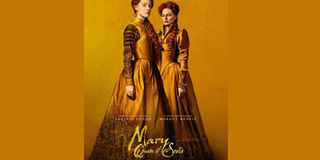THE REEL: 'Mary Queen of Scots' will keep you glued to your seat

A poster of 'Mary Queen of Scots'. PHOTO | COURTESY
What you need to know:
- Mary wants to reclaim her rightful throne as Queen of Scotland, but Elizabeth rules both kingdoms with a tight hold and she isn’t willing to hand it over.
- Elizabeth is barren, a situation that plays into Mary’s favour and can be exploited as it means that she cannot bear heirs to her throne.
- Women in medieval times were seen as weak and undeserving of leadership.
- Religion is another very strong theme in the movie, portrayed by the struggle for the thrones pitting Protestants against Catholics.
- Do you have feedback on this article? E-mail: [email protected]
Mary Queen of Scots (2018) is an intense historical drama that will keep you glued to your seat. It received two wins at the Oscars 2019, winning at ‘Best Achievement in Makeup and Hairstyling’ and ‘Best Achievement in Costume Design’.
Set in the 1500s, it tells a tale of two Queens and cousins, Mary of Scotland and Queen Elizabeth of England, who are interlinked by circumstance to rule their countries independently but whose fate is also tied to each other.
Directed by Josie Rourke and written by Beau Willimon, it is based on John Guy’s biography, Queen of Scots: The True Life of Mary Stuart. It is 2h 4 mins long and is rated R for some violence and sexuality.
The movie shows two parallel worlds ruled by the two queens. Mary’s is much harsher and bare, which is a reflection of her bare knuckles fight for her rightful throne, and Elizabeth’s world is rich and opulent to show the wide gulf between the two. The film was shot on location in Edinburgh, Scotland, and the HolyRood Castle, where in the movie Mary resides. It was constructed at Pinewood Studio while some scenes were filmed at Blackness Castle, a real life 15th-century castle.
Many of the scenes for Scotland were shot in the open air, while in contrast, Elizabeth’s scenes were shot in actual stately homes in England, partly at Oxford University and the Chiltern Open Air Museum in Buckinghamshire. All these locations date back in time and therefore give the movie a lot of credence in terms of its medieval feel and wealth from old money.
Queen Mary, played brilliantly by Saiorse Ronan, was sent to France at the age of 16 and married there, where she became Queen of France. At 18, she was widowed and returned to her home, Scotland, where she struggled to overthrow her cousin Elizabeth the Queen of England played regally by Margot Robbie. The struggle between the two formidable women sets the stage for a movie that casts a light on political intrigues and the peculiar struggle faced by female monarchs.
POWER, POLITICS AND GENDER
Mary wants to reclaim her rightful throne as Queen of Scotland, but Elizabeth rules both kingdoms with a tight hold and she isn’t willing to hand it over. Elizabeth is barren, a situation that plays into Mary’s favour and can be exploited as it means that she cannot bear heirs to her throne. While Mary was away in France, the Scottish Kingdom was under the stewardship of her brother James Stewart, Earl of Moray, and he has to hand over power to Mary once she returns. He has reservations about her rule and this provides her enemies with a powerful ally who will help to bring her down.
In the movie, the advisers in the two courts are men driven by personal ambition and a loyalty to their respective queens that will see them dream up murder and betrayal just to keep a hold on the throne. The queens are powerless to stop the advisers from plotting, but they are ruthless in dealing with it when it is brought to their attention, and stamping their authority. Elizabeth has a black adviser, Lord Randolph, played by Adrian Lester who carries a lot of clout in the council. It wasn’t very realistic, imagining a black person giving advice to the Queen of England in medieval times, however, it is a way of showcasing diversity and getting more faces on screen.
Religion is another very strong theme in the movie, portrayed by the struggle for the thrones pitting Protestants against Catholics. In this struggle, there are casualties, and a case of homosexuality in Mary’s court is met with the most horrendous and bloody death that was assigned to those who committed this unpardonable sin.
Women in medieval times were seen as weak and undeserving of leadership. Those who were affluent were perceived as assets to bargain with and for those of a lower station in life, as no more than beasts of burden. Their ordinary lives were hard and brutal and they were voiceless. The movie depicts the power struggle of the classes, rich against poor, with the latter portrayed by Mary as ready to fight for her throne and for her country. The ending is both bitter and a loss to both kingdoms.
***
Do you have feedback on this article? E-mail: [email protected]




